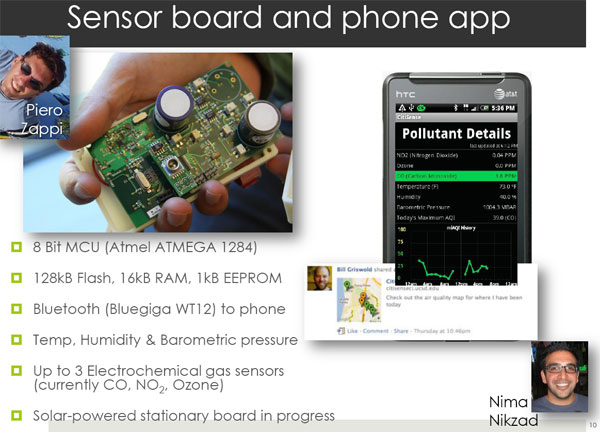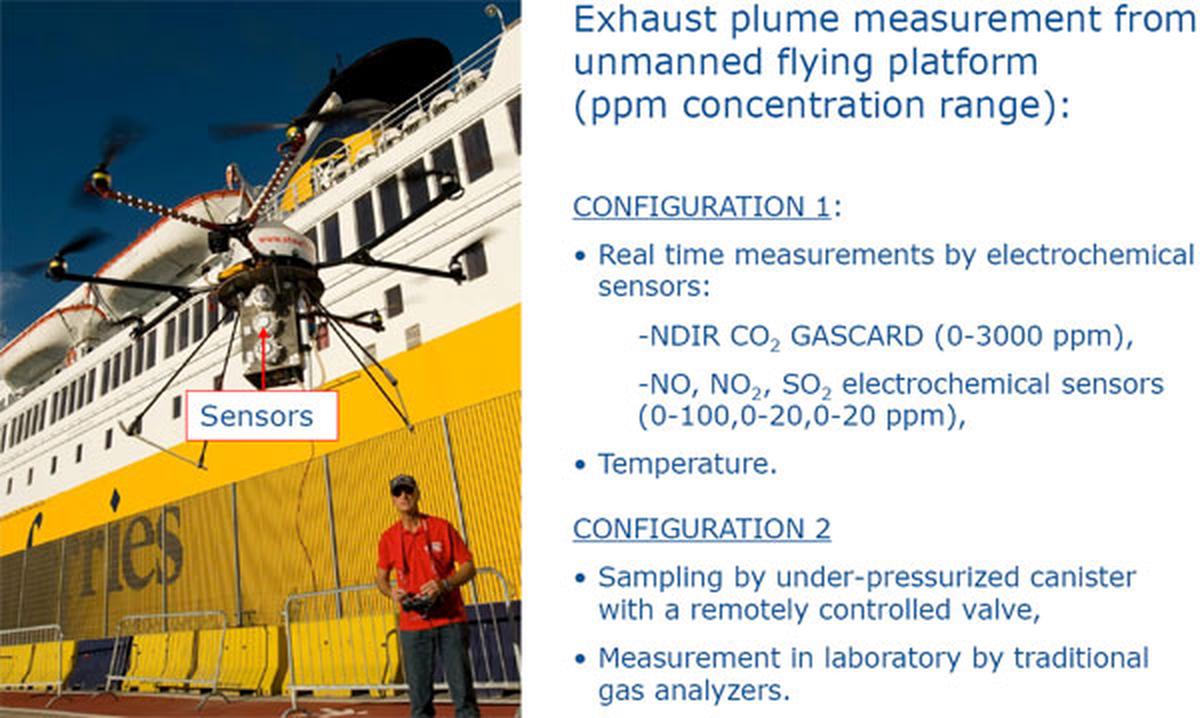
On March 25th I flew down to North Carolina to share AirCasting at the "Apps & Sensors for Air Pollution" workshop hosted by the US Environmental Protection Agency. The workshop took place at the EPA's state of the art facility in Research Triangle Park where participants gathered to share their work building, testing, and visualizing data from low-cost, mobile air quality monitoring hardware. From remote control air quality monitoring helicopters to piezoelectric powered health monitoring bracelets to air quality eggs, it's all covered here . . .
Michelle Gerboles from the European Commission - Joint Research Centre shared his work on "Micro-sensors for ambient air monitoring". Standing out among the many projects he covered was his work measuring ship emissions using an "unmanned flying platform".
Veena Misra from North Carolina State University presented her work on Advanced Self-Powered Systems of Integrated Sensor Technologies aka ASSIST. She described how body heat and motion might be used to power sensor bracelets that would continuously monitor an individual's biology and environment and provide bio-feedback that could be acted upon in the moment to improve health. I wonder if one day these types of sensor packages will live inside our bodies, powered by our own glucose stores. Lose weight while monitoring your health!
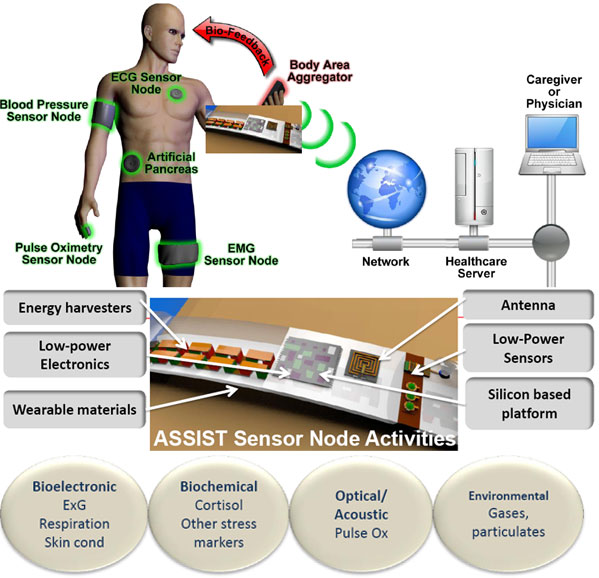
Brian Beveridge from the West Oakland Environmental Indicators Project presented the air quality monitoring his community group did in their residential neighborhood located next to the seventh largest port in the US. They used a range of different air quality monitoring devices including the Intel-Berkeley Common Sense badge.
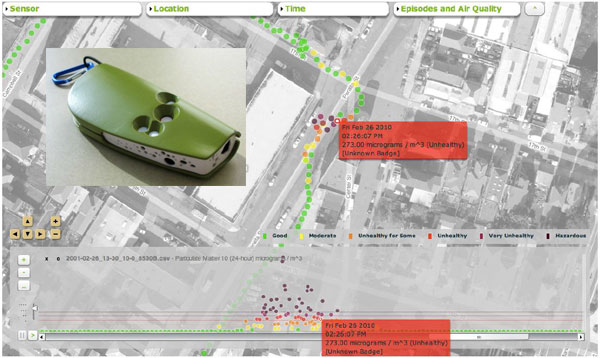
Joe Saavedra from Parsons presented Citizen Sensor and the Air Quality Egg. Two citizen science projects that prioritize public engagement as a core value.
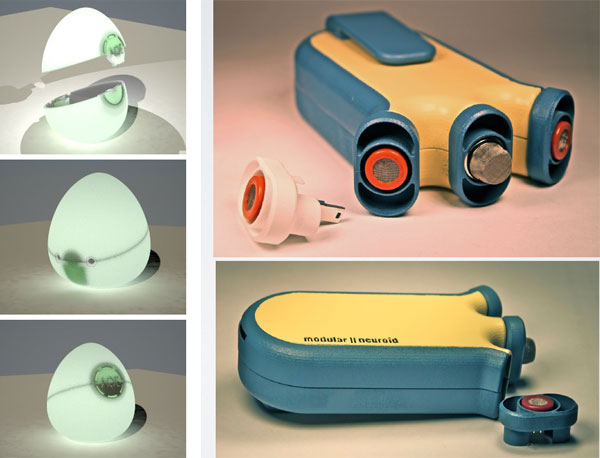
Prabal Dutta from the University of Michigan presented a bird's eye view of the evolution of pervasive sensing systems and identified some of the opportunities that will emerge as these systems proliferate. He should know since he was one of the big brain's behind the previously mentioned Common Sense badge and HiJack, a hardware/software platform for creating cubic-inch sensor peripherals for smartphones that harvest power and bandwidth from the headset jack.
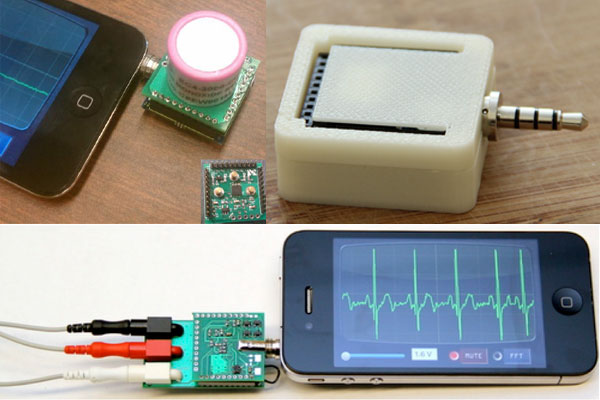
Michael Hannigan from UC Boulder presented M-Pod and the Mobile Air Quality Sensing System. It's amazing how many of us are working on handheld air monitoring units paired to Android smartphones. I've been talking with Ricardo Piedrahita, a grad student at Boulder who is working on the M-Pods, about flowing their data into the AirCasting platform.
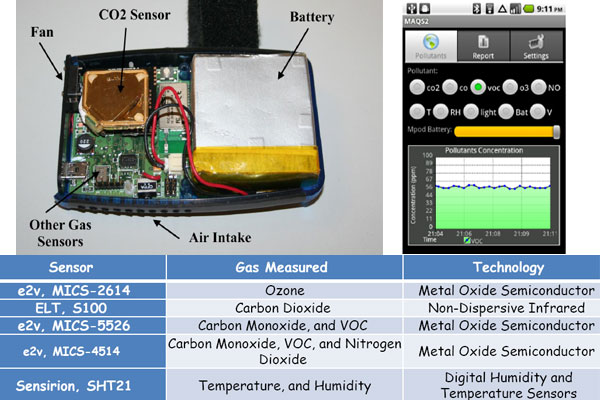
Mike Taylor from Carnegie Melon unveiled the AirBot, a sub-$100 handheld particulate matter sensor. He also shared a phenomenal graphing application that his team at the CM Robotics Institute created to display data on their bio-sense platform, BodyTrack. Unfortunately the BodyTrack website is not open yet but they created a nice Google map mashup using air quality data from AIRNow.gov that shows off their graphing software.
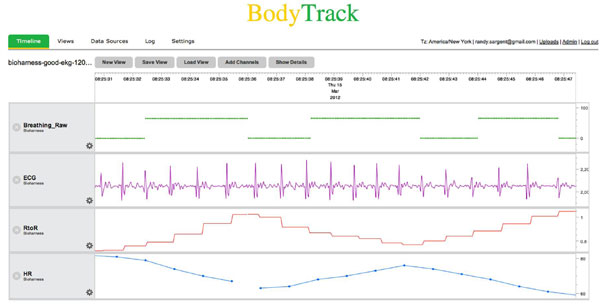
Jenny Quintana from San Diego State University Graduate School of Public Health presented CitiSense, another citizen science project that utilizes handheld air monitoring units paired to a smartphone.
